#gryphons
Text
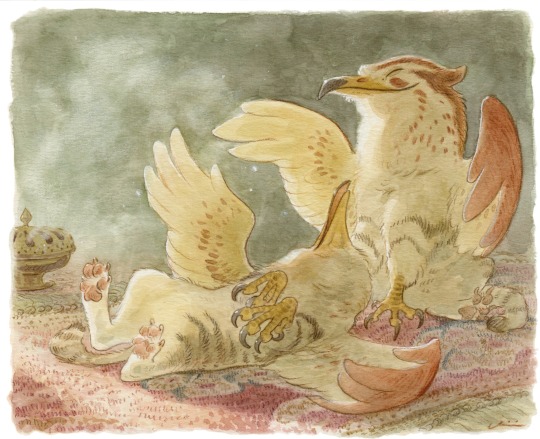
All that important mischief-making tires a baby out.
4K notes
·
View notes
Photo

GRYPHONS!! gryphons in serpentverse are a distant relative to dragons, but are not magical creatures - the event that originally caused them to be weird bird-mammal hexapods was magical in nature, but modern gryphons are largely mundane. they fill a large range of niches and some are even domesticated! a little more description of the varieties pictured here under the cut:
River Fishergriffs are flightless gryphons which are very similar to river otters in size, shape, and niche. They’re generally good-natured, playful creatures, but can be vicious in defense of their young. They are elegant swimmers but a bit clumsy on land. They live in small family groups usually consisting of the parents and a few children - older children tend to stay with the nest and help raise the younger, with some staying with their family their entire lives and not reproducing.
Gryphlets (Cherry Gryphlet and Common Gryphlet depicted) are small, intelligent gryphons that are something like an unholy combination of a squirrel, a monkey, and a parrot. Like parrots, they are excellent at vocal mimicry, and also like parrots they make awful pets (but that doesn’t stop anyone). They are usually omnivores, but diet varies with species (the gryphlet clade is extremely diverse). Most gryphlets are social to some degree, with the biggest flocks numbering in the hundreds.
Snow-Gryphons are medium-sized, cold-adapted hunters, primarily inhabiting the south-pole continent, Ussa. They are elusive, shy animals that are a rare but lucky sight - though it’s best not to get too close. They’re about the size of a bobcat and have very sharp claws, and have been known to go after prey as big as elves! They are solitary and only meet with others of their kind to mate.
Essvai Dragons are, of course, not dragons at all but a breed of domesticated gryphon bred to resemble them. While they look imposing, they are usually docile in temperament, and like nothing more than napping by a warm fireplace or in a patch of sunlight. They were originally status symbols but over time have become somewhat more common pets, though purebred ones are still very expensive (and those from shadier breeders tend to have a myriad of health issues...)
Monkeyhawks are predatory gryphons that usually inhabit forested environments. They’re agile fliers in a pinch but are adept climbers as well, preferring only short flights to catch prey or escape danger. They are usually either solitary or a mated pair, though they don’t necessarily mate for life and don’t suffer particularly from “divorce” or death of a mate. They have a reputation for carrying off elven children, but this happens very rarely in reality - they tend to steer well clear of elven settlements.
2K notes
·
View notes
Text

POV- You bumped into Domiel on his walk to work
114 notes
·
View notes
Note
have you done aziraphale and/or crowley?

175 notes
·
View notes
Text

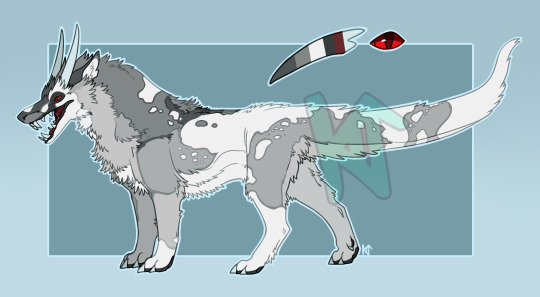
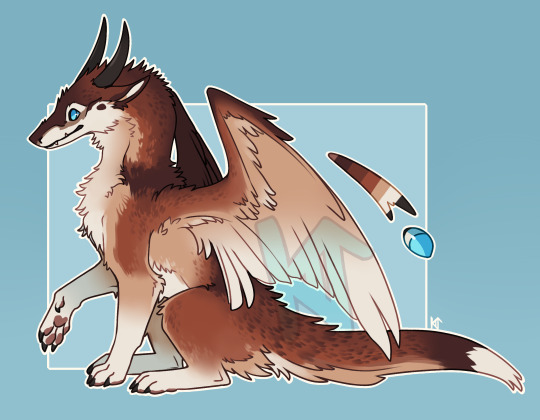
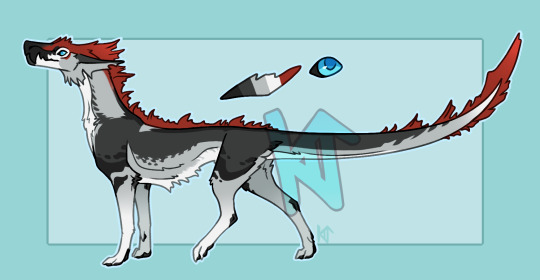
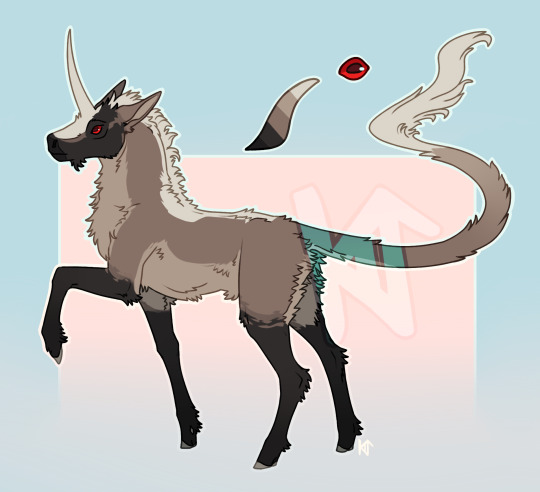

Got a new batch of adoptable up on Kofi!
114 notes
·
View notes
Text


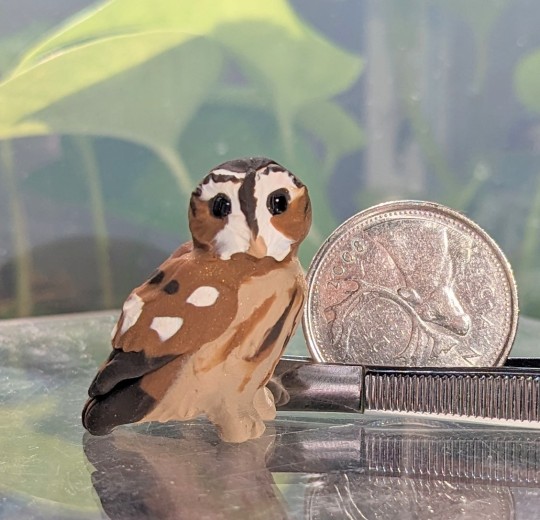

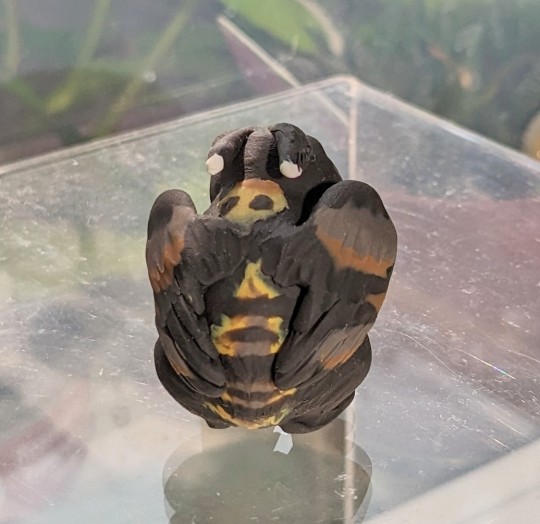


Finally got these guys recorded and photographed for the shop. These are the Furnal Equinox survivors of 2023, who haven't found their homes yet so came back with me.
Clockwise in first photo, Triton Cockatoo, Death's Head Mothman, Grumpy Toad, Tawny Owl, and Belted Kingfisher Gryphon.
Grab them here if they look like critters you need in your life.
#mothman#cryptids#gryphons#kingfisher#owl#tawny owl#cockatoo#toad#wildlife#birds#my art#furnal equinox 2023
300 notes
·
View notes
Note
have you seen how Lewis Carroll understood the word "gryphon"? https://www.alice-in-wonderland.net/resources/pictures/alices-adventures-under-ground/
He is a precious baby

He lay fast asleep in the sun :(
108 notes
·
View notes
Text
A brief overview of:
(North American) Gryphons
• Bald Eagle X Grizzly Bear
• Roadrunner X Coyote
• Crow X Raccoon
• Hummingbird X Pika
• Roadrunner X Hare
• Red Tailed Hawk X Coyote
• (California) Condor X Mountain Lion
• Owl X Fisher (Pékan)
• Duck X Muskrat
• Pigeon X Rat
• Jay X Squirrel
{please note that American Gryphons, unlike their European counterparts, tend to have mammalian forelimbs and torsos, with avian hind limbs, wings, and head}
36 notes
·
View notes
Text
Folklore Fact - Gryphons/Griffins
Gryphons, griffins, griffons, however you prefer to spell it (I personally use gryphon) - let's talk their folklore and mythology!

(Attic pottery depicting a satyr and a griffin and an Arimaspus from around 375-350 BC, Eretria.)
You probably already know the common popular culture concept of a gryphon: a big, vicious beast that attacks people and probably eats them and/or carries people away to its nest to feed them to its babies. Not much about it has changed in legend, though in a lot of popular culture today, it has seemed to lose its divinity. Gryphons - griffins, whatever you prefer - have quite the robust history, like so many creatures of myth and folklore. Unlike some, however, they have changed very little over time.
Note that this article a general overview of concepts, not a detailed history.
Let's start with etymology, because I just love that stuff. The word "griffin" comes from the Greek word "gryps," which referred to a dragon or griffin and literally meant "curved [or] hook-nosed." Late Latin spelled it "gryphus," a misspelling of grypus, a Latinized version of the Greek (source: https://www.etymonline.com/, one of my favorite websites).
Griffins are said to have the head and wings of an eagle and body of a lion. They may or may not also have pointed ears, depending on the depiction (they more often did, overall, though the griffin of Crete is a notable exception). They were said to guard the gold in the mountains of the north, specifically the mountains of Scythia. The one-eyed Arimaspian people rode on horseback and attempted to steal the griffins' gold, causing griffins to nurture a deep hatred of and hostility toward horses.
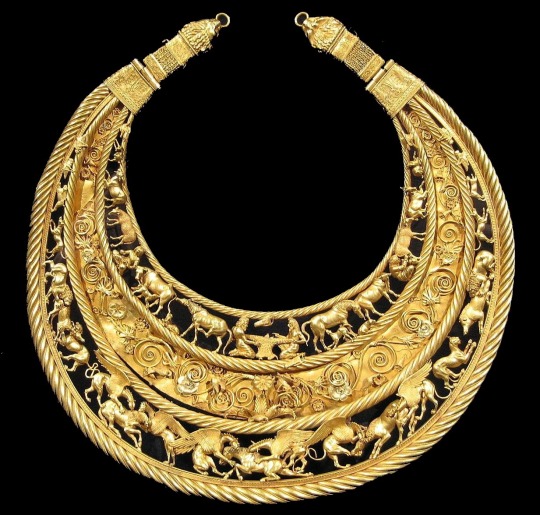
A Scythian pectoral, thought to have been made in Greece, depicting - among other things - griffins slaughtering horses. Griffins really, really hate horses.

The famous griffin in the palace of Knossos at Crete, from the Bronze Age (restored).
Griffins appear in truly ancient civilizations, not only Greece but also ancient Egypt and civilizations to the east, including ancient Sumeria. Griffins were later said to also dwell in India and guard gold in that region, and they continued to appear in art throughout ancient Persia, Rome, Byzantium, and into the Middle Ages throughout other regions such as France; they were depicted in ancient Greece with relative frequency and occasionally of considerable importance.
Griffins appeared in many ancient Greek writings, including Aristeas in the 7th century BC. Herodotus and Aeschylus preserved and continued these writings in the 5th century BC, including lines such as,
"But in the north of Europe there is by far the most gold. In this matter again I cannot say with assurance how the gold is produced, but it is said that one-eyed men called Arimaspoi (Arimaspians) steal it from Grypes (Griffins). The most outlying lands, though, as they enclose and wholly surround all the rest of the world, are likely to have those things which we think the finest and the rarest." Herodotus, Histories 3. 116. 1 (trans. Godley) (Greek historian C5th B.C.), source: https://www.theoi.com/Thaumasios/Grypes.html (a wonderful site)
Physical descriptions of the griffin were not commonplace until some later works, and even then, their appearance wasn't always agreed upon. Even the notion of griffins having wings was sometimes disputed. Some scholars even got pretty wild, claiming griffons had no wings at all but instead skin-flaps that they used to glide. They apparently hated awesome things, so it turns out there were always boring people who thought they knew everything, wanted to explain everything "logically," and generally assume they were the smartest ever while also ruining mystique. They would make great scientists today.
Griffins were, however, often said to be holy in nature. They were referred to as the "unbarking hounds of Zeus" by Aeschylus, who warned others never to approach them. Gryphons were also considered sacred to several gods, including prominently Apollo, who was said to depart Delphi each winter, flying on a griffon (griffin, gryphon, etc, I keep swapping this around, I know; my brain spells it differently because I've read way too many sources), and he also is occasionally depicted as hitching griffins to his chariot in addition to riding one. This was particularly prominent in the cults of Hyperborean Apollo, one of the many endless and fascinating cults of ancient Greece.

Medieval bestiary depiction of a griffin slaughtering a horse.
Even by the Middle Ages, gryphons still hated and slaughtered horses and guarded gold, elements that certainly persisted throughout their legends. They also killed men and carried them away to their nests, similar to the manner in which Aeschylus warned people to stay away from gryphons even back when. We can obviously assume griffons were never cuddly, so that isn't much of a change.
Griffins also did not entirely lose their divine relations even into the Middle Ages. Christianity often used positive portrayals of griffins to represent and uphold certain positive tenets of Christian faith; likewise, they became important symbols of medieval heraldry, used to represent a Christian symbol of divine power, as well as general courage, strength, and leadership, especially in a military sense. The depiction of the griffin as a powerful and majestic creature - killing horses and men or not - throughout its history is no doubt because they are a combination of two beasts often considered noble symbols of bravery, power, and divinity: the lion and the eagle, kings of land animals and birds, respectively.
That's a general overview! As you can see, griffins aren't always so bad, at least not compared to some of the other creatures out there from folklore and myth.
( If you like my blog, be sure to follow me here and sign up for my free newsletter for more folklore and fiction, including books!
Free Newsletter - maverickwerewolf.com (info + book shop) — Patreon — Wulfgard — Werewolf Fact Masterlist — Twitter — Vampire Fact Masterlist — Amazon Author page )
#folklore#mythology#gryphon#griffin#fantasy creature#gryphons#griffins#griffon#folklore fact#folklore thursday#greek myth#myth#persian myth#medival#medieval folklore#history
12 notes
·
View notes
Text

Chat? We are So Fucking Back

#Literally this is the first time I've made a full illustration in WELL over 2 years#it feels so good to flex my art muscles again after so long#Wyngro completely killed my creative drive for the longest time like I thought that shit was gone for good#so so so happy especially since I've been rotating these gryphon characters in my head for a while now#maybe I'll make an art blog if I start posting more art idk who knows#My art#gryphons
18 notes
·
View notes
Text
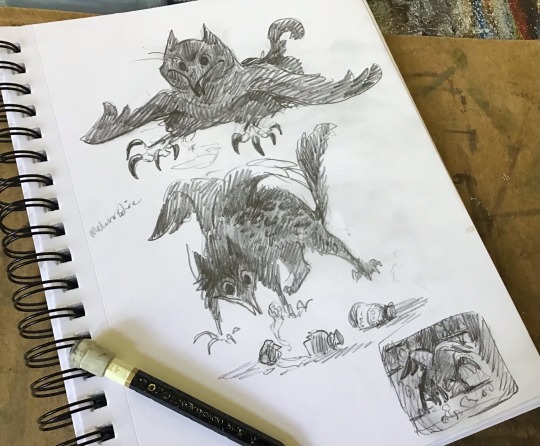
Can’t stop, won’t stop with the griffin kittens.
544 notes
·
View notes
Text

hmm doodles
40 notes
·
View notes
Text

me as a griffin (real)
#my art#artists on tumblr#art#oc art#ocs#digital art#oc artist#oc#original character#soot#griffin#gryphon#griffins#gryphons
20 notes
·
View notes
Text

Two Gay Gryphons
141 notes
·
View notes
Text

#hellsing iscariot#enrico maxwell#alexander anderson#hellsing ultimate#hellsing fanart#The Vatican Hellsing#Hes a piss horse#Useless Unicorn#gryphons#alt universe#my designs#my artwork#Maxwell is a piss colored Unicorn
15 notes
·
View notes
Text
Okay hear me out
Poromish gryphons but with battle claws


Do you see my vision?
9 notes
·
View notes